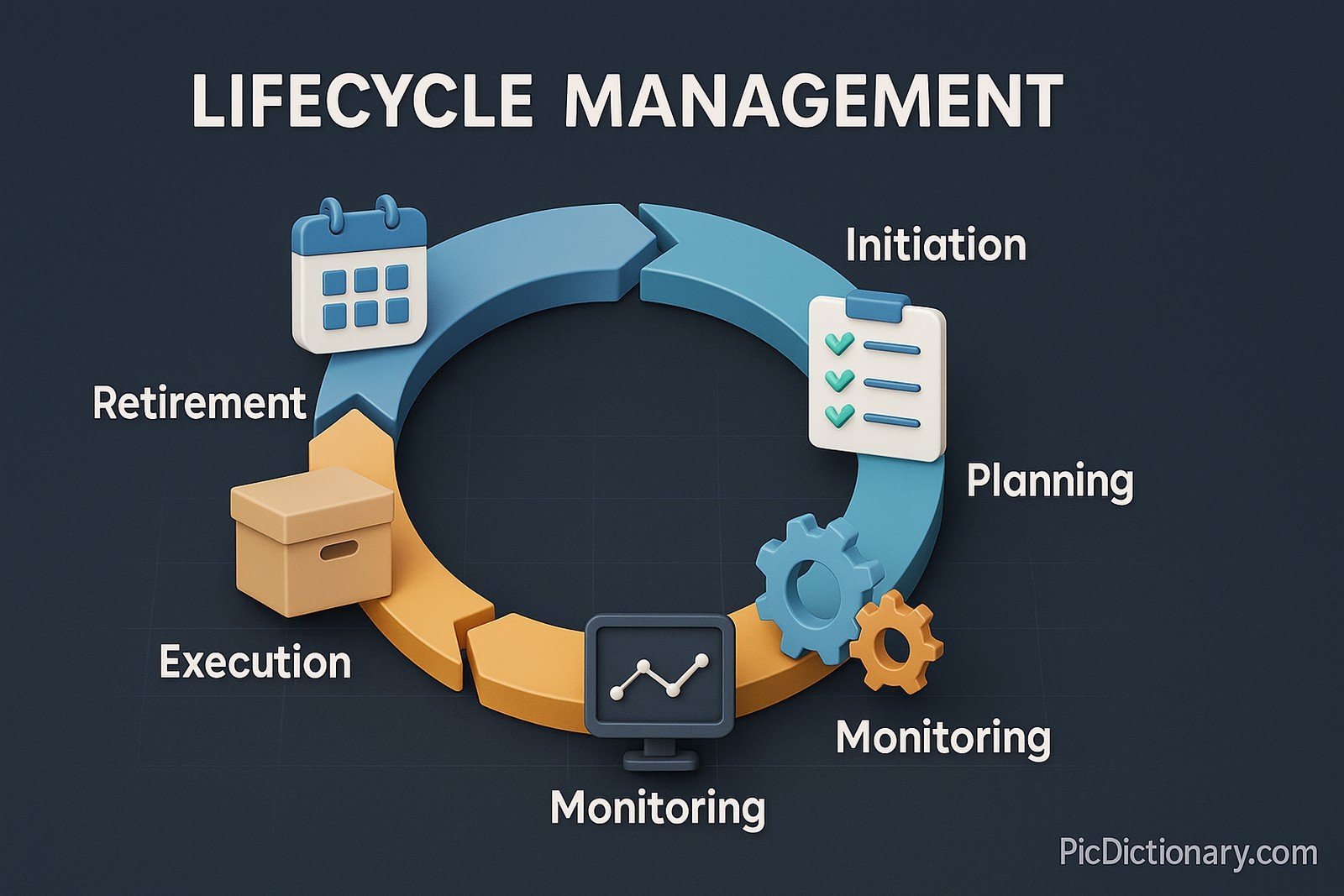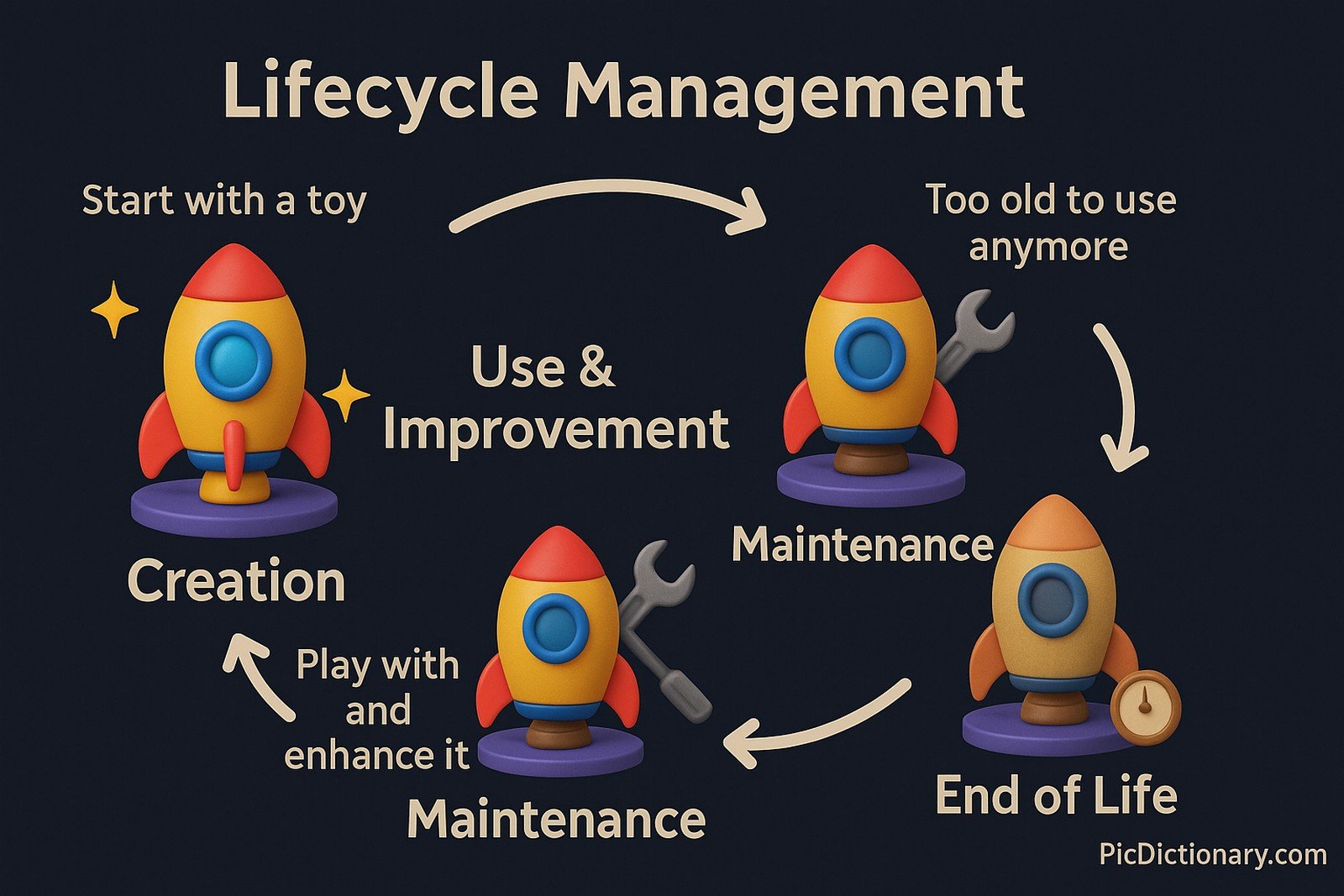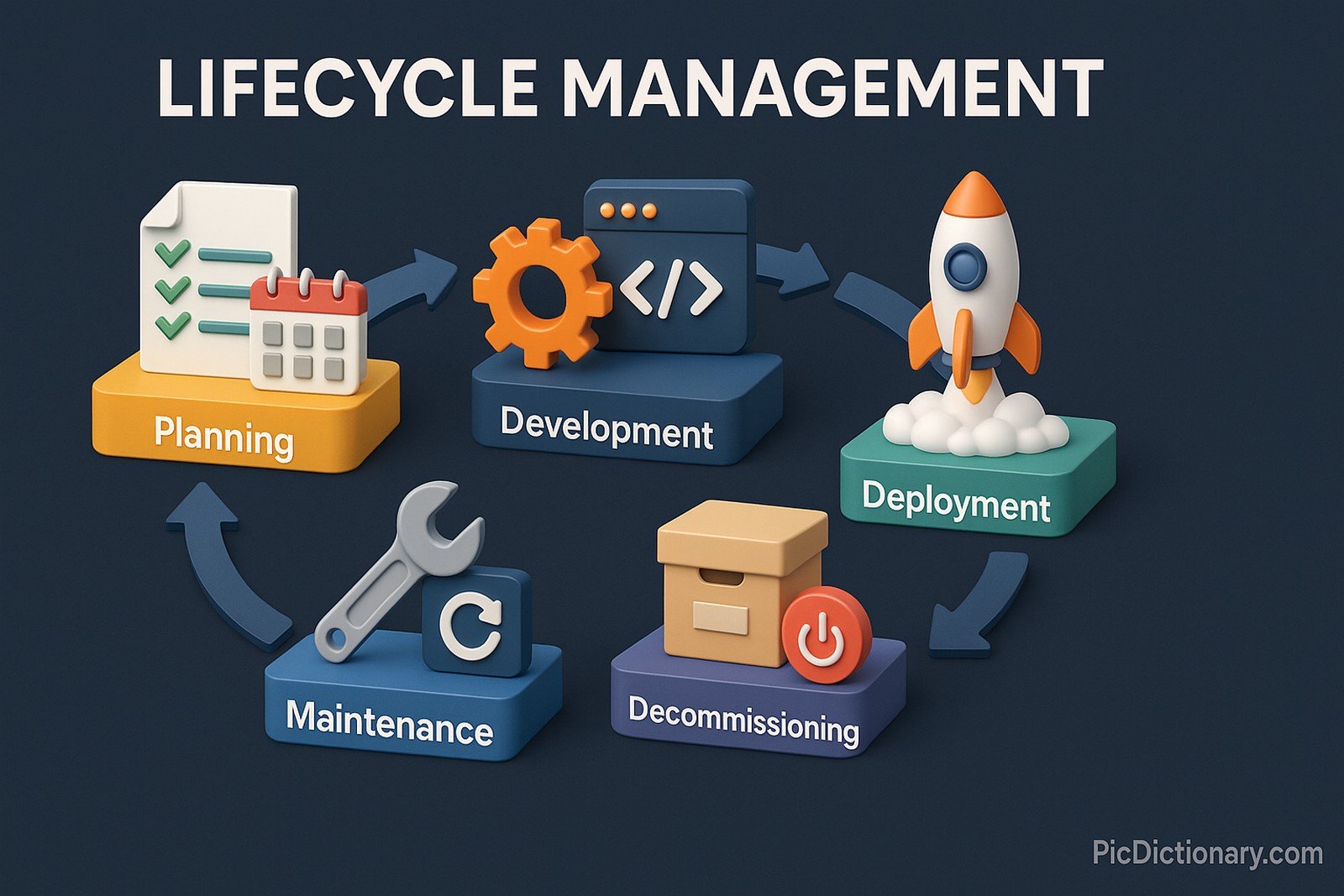Lifecycle Management

Quick Navigation:
- Lifecycle Management Definition
- Lifecycle Management Explained Easy
- Lifecycle Management Origin
- Lifecycle Management Etymology
- Lifecycle Management Usage Trends
- Lifecycle Management Usage
- Lifecycle Management Examples in Context
- Lifecycle Management FAQ
- Lifecycle Management Related Words
Lifecycle Management Definition
Lifecycle management is the process of overseeing and optimizing a product, system, or software application from inception to retirement. It encompasses stages such as planning, development, deployment, maintenance, and eventual decommissioning. Effective lifecycle management ensures sustainability, cost-effectiveness, and efficiency, particularly in software development, where updates, patches, and deprecations need structured handling. It is widely used in industries like IT, manufacturing, and product development to manage assets efficiently over time.
Lifecycle Management Explained Easy
Think of a toy. When you get it, it’s brand new and exciting. Over time, you might fix it when it breaks, clean it, or even add stickers to make it better. Eventually, when it’s too old, you stop using it or replace it. Lifecycle management works the same way, but for software, computers, and products. Companies plan, create, improve, fix, and eventually retire their software so it keeps working well for as long as possible.
Lifecycle Management Origin
The concept of lifecycle management emerged alongside the rise of industrial manufacturing and later adapted into IT and software development. The need for structured management of products, from creation to disposal, became apparent with the increasing complexity of technology and software applications. The adoption of Agile and DevOps methodologies has further refined lifecycle management strategies in the modern era.
Lifecycle Management Etymology
The term “lifecycle” originates from the Latin vita (life) and cyclus (cycle), indicating a repeating sequence of events. “Management” comes from the Latin manu agere, meaning “to lead by hand.” Together, the phrase represents the structured handling of a product or system throughout its existence.
Lifecycle Management Usage Trends
Lifecycle management has gained prominence with the advent of cloud computing, software as a service (SaaS), and continuous integration/continuous deployment (CI/CD) strategies. Organizations now prioritize lifecycle management to minimize technical debt, enhance security, and ensure compliance with regulatory standards. Industries such as IT, healthcare, and automotive sectors rely heavily on lifecycle management to optimize operations and reduce costs.
Lifecycle Management Usage
- Formal/Technical Tagging:
- Software Development
- IT Asset Management
- DevOps
- Product Lifecycle - Typical Collocations:
- "software lifecycle management"
- "effective product lifecycle"
- "lifecycle management strategy"
- "IT asset lifecycle"
Lifecycle Management Examples in Context
- A software company releases a new application, providing updates and security patches throughout its lifecycle before eventually discontinuing support.
- Organizations use lifecycle management to phase out legacy systems and transition to modern infrastructure.
- In hardware management, companies track the lifecycle of laptops and servers to plan for upgrades and decommissioning.
Lifecycle Management FAQ
- What is lifecycle management?
Lifecycle management refers to the systematic oversight of a product or system from inception to retirement, ensuring efficiency and sustainability. - Why is lifecycle management important in IT?
It helps organizations manage software updates, security patches, and deprecations efficiently, preventing outdated or vulnerable systems. - What are the key stages of lifecycle management?
The main stages include planning, development, deployment, maintenance, and retirement. - How does lifecycle management impact business efficiency?
It reduces costs, enhances productivity, and ensures compliance by managing assets effectively over time. - Is lifecycle management only for software?
No, it applies to hardware, IT infrastructure, and even non-technical industries like product manufacturing. - What role does DevOps play in lifecycle management?
DevOps facilitates continuous integration and deployment, streamlining the lifecycle process with automation. - How can lifecycle management improve cybersecurity?
By managing updates, patches, and deprecations, it helps mitigate security risks. - What tools are commonly used for lifecycle management?
Popular tools include Jira, ServiceNow, and IBM Maximo for tracking assets and software development. - How does cloud computing influence lifecycle management?
Cloud services provide scalable solutions for managing software deployment, updates, and end-of-life transitions. - Can lifecycle management help with sustainability?
Yes, by optimizing resource usage and reducing electronic waste, it contributes to environmental sustainability.

Lifecycle Management Related Words
- Categories/Topics:
- IT Asset Management
- Product Development
- DevOps
- Cloud Computing
Did you know?
Lifecycle management plays a crucial role in sustainability efforts. Many tech companies use it to track and repurpose old hardware, reducing e-waste. For instance, Apple’s device recycling program relies on lifecycle management to refurbish and recycle products efficiently.
PicDictionary.com is an online dictionary in pictures. If you have questions or suggestions, please reach out to us on WhatsApp or Twitter.Authors | Arjun Vishnu | @ArjunAndVishnu

I am Vishnu. I like AI, Linux, Single Board Computers, and Cloud Computing. I create the web & video content, and I also write for popular websites.
My younger brother, Arjun handles image & video editing. Together, we run a YouTube Channel that's focused on reviewing gadgets and explaining technology.



Comments powered by CComment